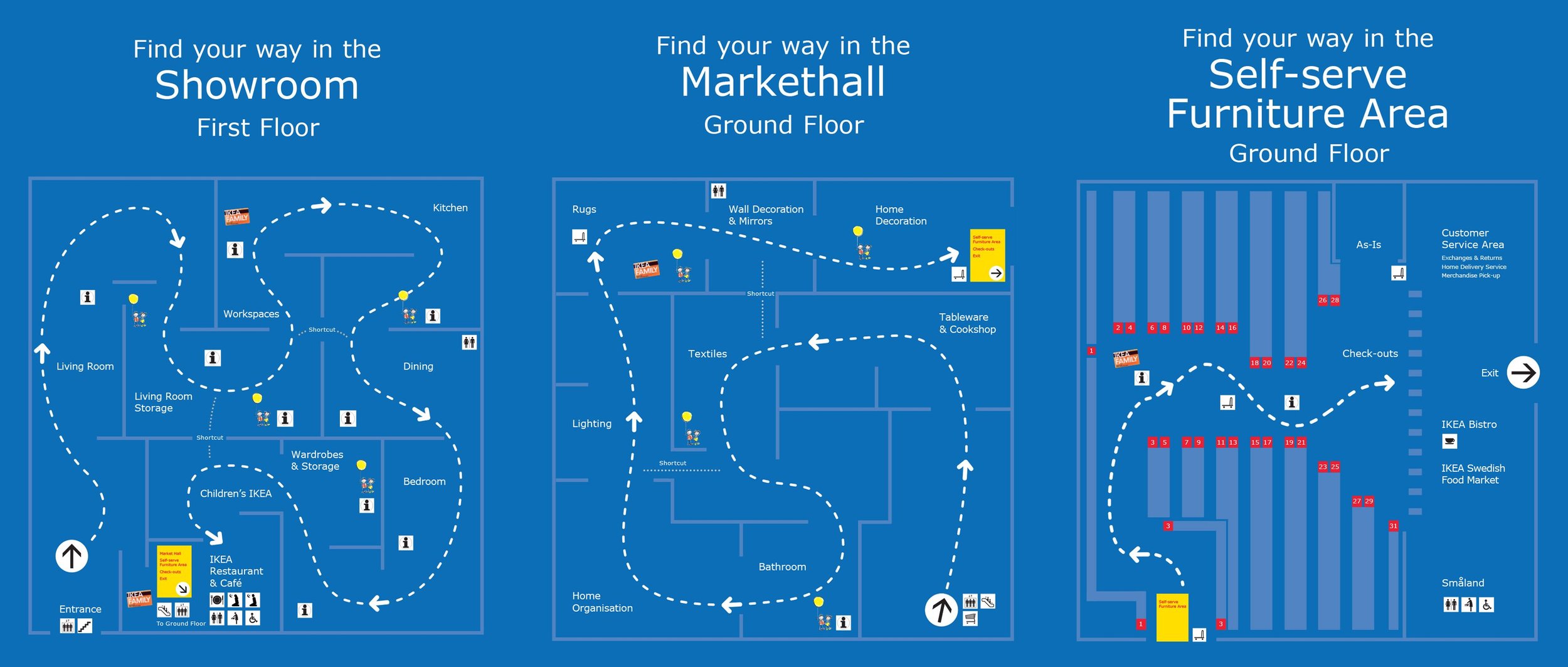Why Can’t You Stick To A Shopping List?
Researchers estimate that half of what consumers end up buying is totally unplanned (Kollat and Willett 1967; POPAI 1995). Yeah, it's either stuff you forgot to put on your list or that impulse buy when you spot something cool and just decide, "Why not?"
Only 20% of IKEA customers’ shopping decisions are based on logic and needs.
The Physical Experience
The architecture of a store can impact customer satisfaction, which in turn might spur impulse buys. In the 20th century, the architect Victor Gruen, who pioneered the first American shopping malls, used light and space to dramatically stage goods in storefront windows, making them look extra tempting. His designs tried to capture the attention of passersby and convert them into customers. Today, people call this technique "The Gruen Effect.” It happens when a store takes you from shopping for a specific item to shopping for shopping’s sake.
Think about your last trip to IKEA.
The place is like a retail ninja. They've got a restaurant with those famous Swedish meatballs because, you know, excitement makes you more likely to drop some cash. According to Richard La Graauw, the Creative Director of IKEA US, almost 20 percent of our buying decisions are based on logic and needs, while a whopping 80% are based on emotions. So, IKEA's mission is to get you hyped up and grab a few extra things.
The largest IKEA in the world is in Pasay City, Phillipines. It is 65,000 sqm, which is the size of Sweden.
The way a store is laid out is any retailer’s secret weapon. They pay close attention to how their how floor plans can change in-store behaviour. Grid layout emphasises speed and convenience. Freeform layouts allow exploration, which can make customers visit more parts of the shop. And racetrack designs create a loop that exposes customers to a certain path of product. Equivalent to the size of five football fields, IKEA uses a fixed path through a maze of product displays. The place is so large that the second you enter the store there is a huge map of the entire building. And that can extend the distance traveled in store. The more you travel, the more items as a shopper you will be exposed to.
Example of an IKEA’s Store map
At the entrance, behold a radiant yellow bin of bags strategically placed next to the escalators. Spots of light guide your eyes to the entrance of the showroom. And before you know it, you are taking the scenic route. With light, you can steer customers towards different areas and different product selections. On average, customers explore only about a third of any retailer’s floor area. But not at IKEA - their store layout forces customers to cover more ground and spend hours seeing, touching, and sniffing everything they've got. Some whimsically dub it "The Modern Maze Experience." Found this blog that totally nails how it feels the first time you step into an IKEA store – check it out!
“Adventurer’s Journal, Day Two: Refreshed from a night’s respite and ready to take on the day, we broke camp and headed out for the kitchen area. We have high hopes we will arrive at our destination before dusk…”
The Digital Experience
Okay so they nailed the store layout and lighting design, what’s else?
The Internet has evolved since it first became commercially available in the early 1990s. From company websites that were little more than online brochures, the web has become a juggernaut platform for establishing relationships with customers. Over time, it has proven to be customers’ first touchpoint with a brand. The distinction between online and in-store experiences is basically a blur now. To customers, it's all one big picture – no matter the channel.
IKEA gets this. They see customer experience as the sum of all parts. And that's part of why they're killing it.
IKEA stores leverage Beacon technologies, which works with the IKEA FAMILY app to monitor how customers move around and what catches their interest. Ease of use, navigation, and search are essential in providing a good digital customer experience, whether on the web or a mobile app. The aesthetics, the vocabulary used and the communication of the company’s brand are also important. Their digital platforms are built with customers in mind and speak the language of customers. Everything screams "customer first." Data scooped from these digital implementations will then be used to offer valuable insights into what's working in their store layout. This means retailers like the giant flatpack empire will only get better at nudging you into spending time in more parts of the store. Sneaky, right? But it's the art of the retail game.
So, as you embark on your retail adventure, know that the ever-evolving blend of customer service, design, and technology is teaming up to grab your attention and lead you through the retail wonderland.
And if you're into geeking out about all things IKEA, delve deeper into the iconic phenomenon known as The IKEA Effect. Find the fascinating details here: From the Flatpack Furniture to the IKEA Effect


